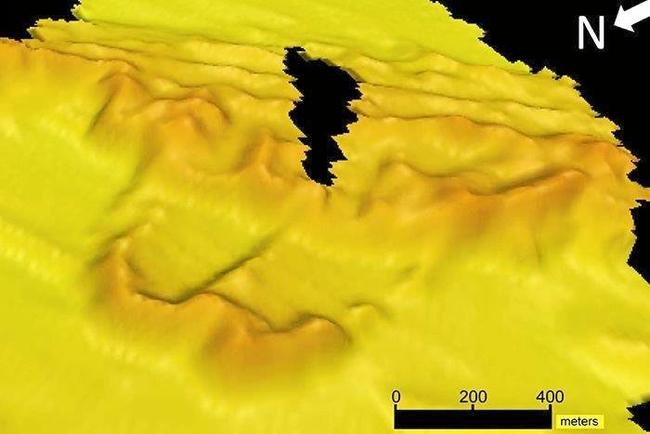Lost for 12,000 years, hidden Cooloola island yields secrets
Lost for 12,000 years, a well-preserved sand island from the Ice Age has been discovered 40km off the Queensland coast and it has scientists puzzled.

Regional news
Don't miss out on the headlines from Regional news. Followed categories will be added to My News.
THE ancient parabolic sand dunes of the Cooloola Sand Mass Region form much of the landscape between Noosa Heads and the northern tip of Fraser Island.
Now, University of Sydney PhD student Tiago Passos believes a lost island with the same dune formations may have been found in the Barwon Bank fishing ground, giving scientists a unique opportunity to puzzle over what may be the original Fraser Island and precursor to the unique landscape of Cooloola.

Lost for 12,000 years and only about 40km out from Rainbow Beach, a sand island from the Ice Age has been discovered, amazingly well preserved and about 60m down.
Mr Passos says the formation he is researching would have been "exactly like Fraser Island”.
And like Fraser Island, increasingly known by its Aboriginal name, K'Gari (meaning Paradise), it may also have been inhabited.
The 70km stretch of dunes appears to have survived amazingly intact, despite being swallowed by the ocean. Mr Passos is one of the researchers investigating this.
The lost ancestor of our Cooloola coastline is thought to have been preserved beneath the ocean because of its chemical make-up, which includes calcium compounds.
It is thought that these might have formed a kind of cement, when subject to rain, time and other geological processes.
This would have meant the dunes had turned to stone before being submerged by the rising seas that followed the last Ice Age.
Mr Passos's work is part of efforts to explain the dunes, which have survived almost like an ancient petrified sand sculpture.
"The site would have been an island exactly like Fraser Island, surrounded by water but 40km away from the current shoreline,” Mr Passos said.
The 70km stretch of dunes, on the sea floor between Fraser and Moreton Islands, has stumped scientists who believe it should have been destroyed by wave and tide action as waters rose around it.
"I think the intriguing thing is what mechanism enabled them to be so well preserved,” Mr Passos said.
The researcher's study of the dunes has led to publication of his work in the prestigious geology magazine, the Australian Journal of Earth Sciences.
Mr Passos says sonar images have revealed the shape and extent of the preserved dune landscape.
Humans are thought to have been long settled on the Australian mainland in the drier, cooler time when the island was still above water, along with many still-existing plants and animals.
Hardening of the dunes may well have preserved a foot or paw print. And such prints might still be preserved in places.
"After the dunes hardened, walking over them would have felt like walking on a rock,” Mr Passos was recently quoted as saying.
He said the dunes were first discovered by an expedition to the Great Barrier Reef, which was mapping the sea floor at a location called Barwon Bank, on the Fraser Shelf, starting 50km north of Moreton Island.
Sonar imaging picked up curved underwater structures, which were originally thought to be part of an ancient reef.
Mr Passos analysed the images and samples and found they were rock-like structures.
And although the calcium may have come from a reef, the lost island was not itself a reef. It was shaped by wind, just like Fraser Island.
But unlike Fraser Island, the submerged dunes are largely composed of calcium carbonate (rather than the silica sand of Fraser Island).
They are up to 15m high, according to marine geologist James Daniel of James Cook University.


